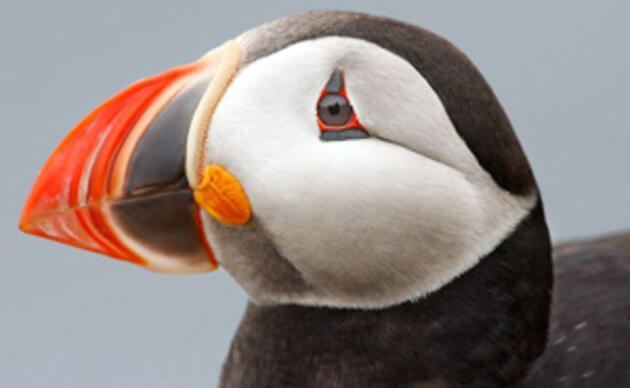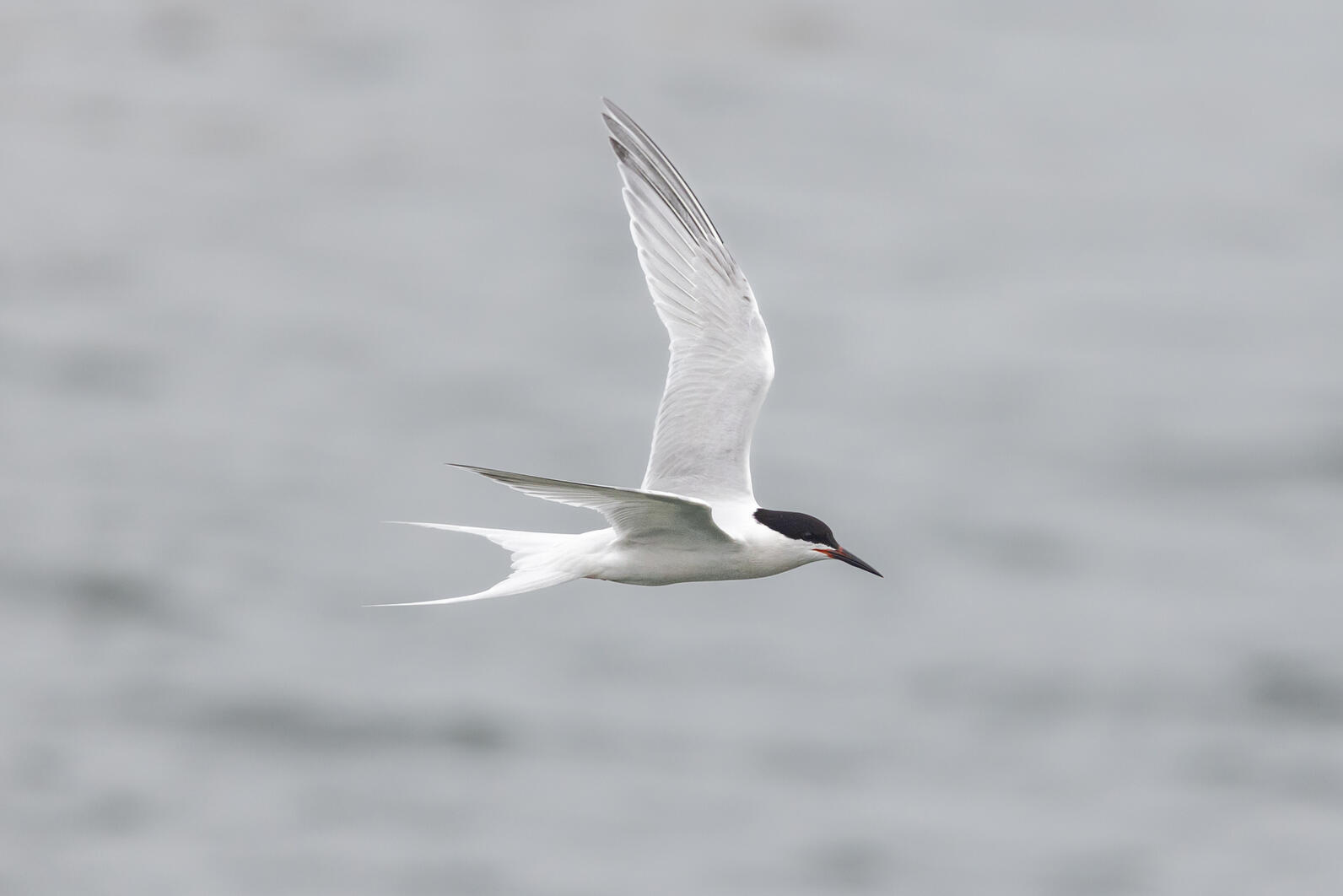
The ever-popular puffin seems to get all the love. Their bright bills and clown-like charisma have made crowds coo for decades. What about the other seabirds, more than 300 species worldwide? They also have stories to share, and each year we’ll highlight a new seabird, how the Seabird Institute works to protect them, and why they’re equally as deserving of your affection. This season we’ll share the story of a federally endangered seabird.
This year’s Bird of the Year graphic was designed by Seal Island NWR Island Supervisor, Coco Faber. Visit the Project Puffin Visitor Center’s online store to pre-order your hat today! Full orders will ship June 15, 2025.
Meet the Roseate Tern
Formally known as Sterna dougallii, the Roseate Tern gets its common name from the ever-so-slight rosy tinge found on its breast when in its breeding plumage. Even more informally, birds of this species are lovingly referred to as “Rosies” by Seabird Institute researchers. These slender-winged, graceful gliders can also be identified by their long, black bill and found around the globe, with breeding grounds and wintering waters in the Atlantic, Indian, and Pacific oceans.
For Roseate Terns that call the Western Hemisphere home, winters are spent along the northern coast of South America. While most will return to islands among the cerulean waters of the Caribbean Sea for the summer nesting season, some intrepid Rosies journey farther north. Thanks to restoration efforts and habitat management, the New England coastline remains a relatively popular chick-rearing destination for the blush-bellied birds. Trust us, there’s nothing like summer in New England.
To learn more about the migration patterns of Roseate Terns, visit the Bird Migration Explorer.
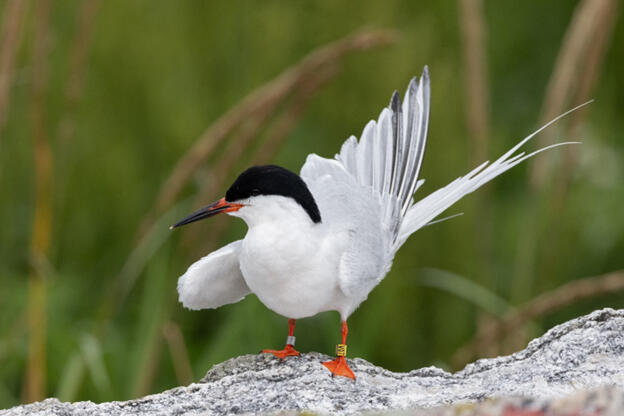
Habitat Haven
Birds, like people, want what’s best for their offspring. Terns prefer a bustling neighborhood and often live in blended colonies, where a variety of species nest in one location. As the saying goes, there’s safety in numbers. These protective parents have mastered the art of the aerial attack when facing a perceived predator. Their weapons of choice? Pointy bills and guano.
In Maine, Roseate, Common, and Arctic terns have different nesting habitats. This reduces competition for nesting space and helps keep the avian HOA happy. Roseate Terns usually lay eggs under boulders or driftwood, or in thick vegetation thanks to their longer legs that make it easier to navigate these spaces.
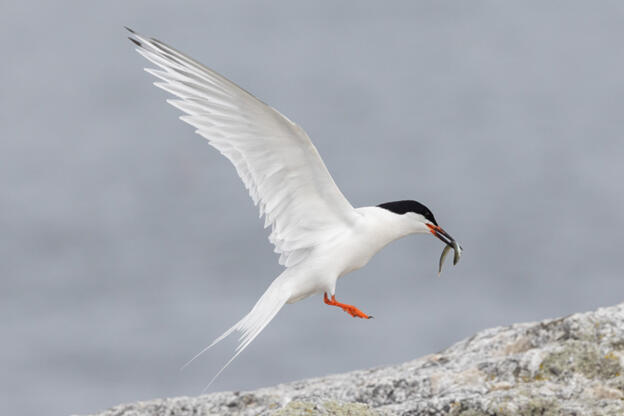
Access to grab-and-go take-out food is also important. Like most seabirds, Roseate Terns are foragers that seek out teeny-tiny fish to feed their chicks. Hake, herring, and sandlance are preferred prey for Roseate Terns in the Gulf of Maine. Tern parents fly high above the ocean in search of forage fish and, when they find a suitable snack for their young, dive below the surface to capture their prey. With a bill full of fish, they return to feed their chicks. Thanks to GPS tracking data, we know that it’s not too unusual for these foraging excursions to last three hours or longer.
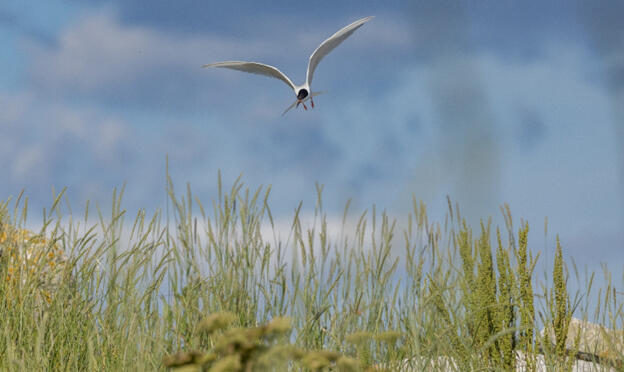
ReTERN of the Rosies
Now that spring migration is underway, terns of all species will soon flock to their nesting colonies. In recent years, Roseate Terns returning to Maine have regularly nested on four islands managed by the Seabird Institute. Stratton Island, the southernmost of these colonies, has hosted the largest Roseate Tern population in the state for the past several years. Join us this season as we follow Roseate Terns nesting on Stratton Island!



